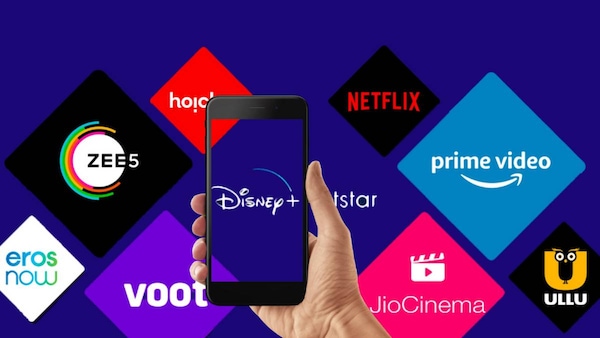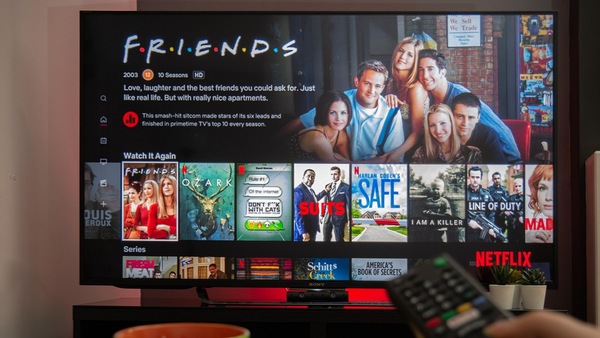What India’s Streaming Landscape Looks Like, In A Post-Jio World
This is #StateOfStreaming, a column where Tatsam Mukherjee breaks down the latest developments in streaming-verse, and traces their impact.

The Indian streaming service landscape has been in a state of flux over the last six months, and Jio Cinema's moves continue to make significant ripples.
Last Updated: 06.28 PM, May 21, 2023
A LOT has been happening in the Indian streaming service landscape in the last six months, since Jio Cinema swung for the fences by streaming the 2022 FIFA World Cup in India for free. After Viacom18’s first streaming service Voot failed to make a significant dent, the conglomerate’s second bet emerged out of nowhere, bringing in a reported 100 million users on its platform and clocking an estimated Rs 300 crore in ad revenue during the World Cup, after shelling out around Rs 440 crore for the rights of the event. Not just stopping at that, Jio Cinema also picked up the digital streaming rights to the Indian Premier League (IPL) at a reported price of nearly Rs 24,000 crore for a five-year period between 2023-2027. Much to the surprise of many, the streaming of the marquee cricket event is also free. The platform, owned by Mukesh Ambani’s Reliance group, has also licenced all Warner Bros content (including prestigious HBO titles) that appeared on Disney+ Hotstar until March 2023.
As if all this wasn’t enough, Jio Cinema (with the help of its studio arm, Jio Studios) has announced a slate of 100+ films ranging from regional content to A-list Hindi films including two Shahid Kapoor-starrers, Raju Hirani’s Dunki (which will obviously release in theatres first), and last year’s high profile but underwhelming-at-the-box office Vikram Vedha, starring Hrithik Roshan and Saif Ali Khan. A space that was initially dominated by Amazon Prime, Netflix, and Disney+ Hotstar has now been blown wide open with Jio. Combined with the long-gestating merger between Sony LIV and Zee5, the landscape might be changing beyond recognition over the next decade.
Disney+ Hotstar, who were miles ahead in the competition with an estimated 60 million subscribers, are no longer untouchable. Analysts have predicted that the streaming service could lose up to 20-25 percent of their user base. Shailesh Kapoor, CEO of Ormax Media, concurs that the departure of the IPL to Jio may have affected Disney+ Hotstar’s subscriber base, but says it might be offset by the platform’s growth: “I think it would be a good result if they can hold on to their numbers. I think that will be a favourable outcome given that they don’t have the IPL,” Kapoor said. With the BCCI auctioning the TV+digital rights for the Indian (men’s) cricket team at home, during 2023-2027, it will be crucial that Disney+ Hotstar retain both TV and Digital rights, believed to be auctioned separately. After bagging the IPL’s digital rights, one suspects that Jio Cinema will lock horns again with Disney+ Hotstar for the rights of the national (men’s) team’s series at home over the next five years.
Amazon Prime Video, the second biggest player in the streaming market, has registered some stellar success with Raj & DK’s Farzi (2023) touted as the most-watched Indian original series with 37 million views. Disney+ Hotstar’s flagship shows Rudra: The Edge of Darkness (2022) and The Night Manager (2023) — both remakes of British shows — came in at #2 and #5 on the list, despite having at least 60 percent more subscribers than Amazon Prime Video. The streaming service owned by the e-commerce giant has three shows in the list’s top-5, with Mirzapur S2 and Panchayat S2 being the other two shows, apart from Shahid Kapoor’s debut on OTT. Interestingly, Amazon has been investing heavily in Amazon MiniTV — which is the platform’s A-VOD (Advertising-Video on Demand). Kapoor believes that Amazon’s acquisition of MX Player — one of India’s largest A-VOD platforms — might have to do with the streaming giant’s consolidation of the A-VOD space.

“When Netflix, Amazon launched in 2016, the idea was to hit the metropolitans…the audience (that) is willing to pay for premium content. But now the market is slowly reaching a saturation point in that respect,” says Kapoor, “so the strategy will be to target the audience that is watching things for free, and to get them to subscribe to the platform.” According to Kapoor, even Jio might be following this strategy of building their AVOD and SVOD side of business, by inviting people to use the app for free before introducing subscription models.
According to Gautam Thakker, CEO of Everymedia (a digital media company offering marketing and PR solutions) we might be entering the era of ‘super-apps’. “So if I sit on one app, watch my content, shop at the same time and do something else…then the user has no need to travel,” says Thakker, going on to add, “The thing you have to understand is most people have only discovered 2-5 percent of the internet, of what’s really out there.” Thakker admires Jio’s long-term strategy, saying he’s not at all concerned about the money being shelled out for all kinds of content; especially given how big a conglomerate the Reliance group is, they might end up giving entertainment as a “value-added service”. Jio is already one of the most widely used 4G and 5G mobile telecom operators, along with 4G fibre cable in most metros in India. Along with this, the Reliance group has also gotten into cable service and e-commerce space in a big way with Jio set-top boxes and Jio Mart respectively.
According to both Thakker and Kapoor, Netflix is still a ‘luxury’ in the Indian market, with its discounted prices being at least 2x of the subscription fees of their competitors, and for considerably less content. “The minute you play the pricing game, the only way for a company to go is down. You start at Rs 699 per subscription, then you go to Rs 499, then Rs 199. Where do you stop?” asks Thakker. However, he says that the silver lining for the service is how it’s delivering international hits like the K-dramas, Money Heist etc. “I think Netflix is still aspirational from India’s perspective. Today, anybody who cannot afford Netflix, the minute they can, they’ll want to pay for it. It’s a good product inherently. Their marketing has been absolutely on point.”
Kapoor believes that despite a couple of dodgy years, the American giant has found its footing in India in the last year or so. “The affordable pricing has helped,” he said, “but it’s also that their content has become remarkably better over the last 12 months.”
Among all this, Zee5’s merger with SonyLIV has been in the works for a while now. With neither of the apps standing a chance in front of behemoths like Jio Cinema or Disney+ Hotstar and the deep pockets of Amazon, merging might be the only option for the two Indian TV giants. Even though the merger could take time (several more months, or maybe even a year) to pan out, Kapoor believes that the two apps can complement each other to take on the bigger players. “Sony has been strong on sports, with them holding the broadcast rights for India matches when they’re touring Australia, South Africa and England. Zee5 has aggressively acquired new releases, and both have premium TV content like The Kapil Sharma Show, Shark Tank, Kaun Banega Crorepati — a huge online property,” notes Kapoor.
Both Kapoor and Thakker believe it’s only a matter of time before we start seeing the big players consolidating, and acquiring smaller players. Jio Studios has announced that a majority of their Bengali films will be produced in partnership with SVF (Shree Venkatesh Films) — also the company behind Bengali content service Hoichoi. They see space for only five to six platforms co-existing in the future, whom mainstream producers will approach. “Ultimately, it is going to boil down to two things: what is the price you are paying for a subscription fee, and how convenient it is. In a price-conscious market like India, you will pay for the top five platforms depending on where you come from,” says Thakker, “No one will pay for the sixth or seventh platform.”
Tatsam tweets @LunkyFallow
